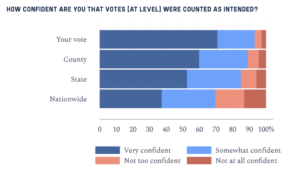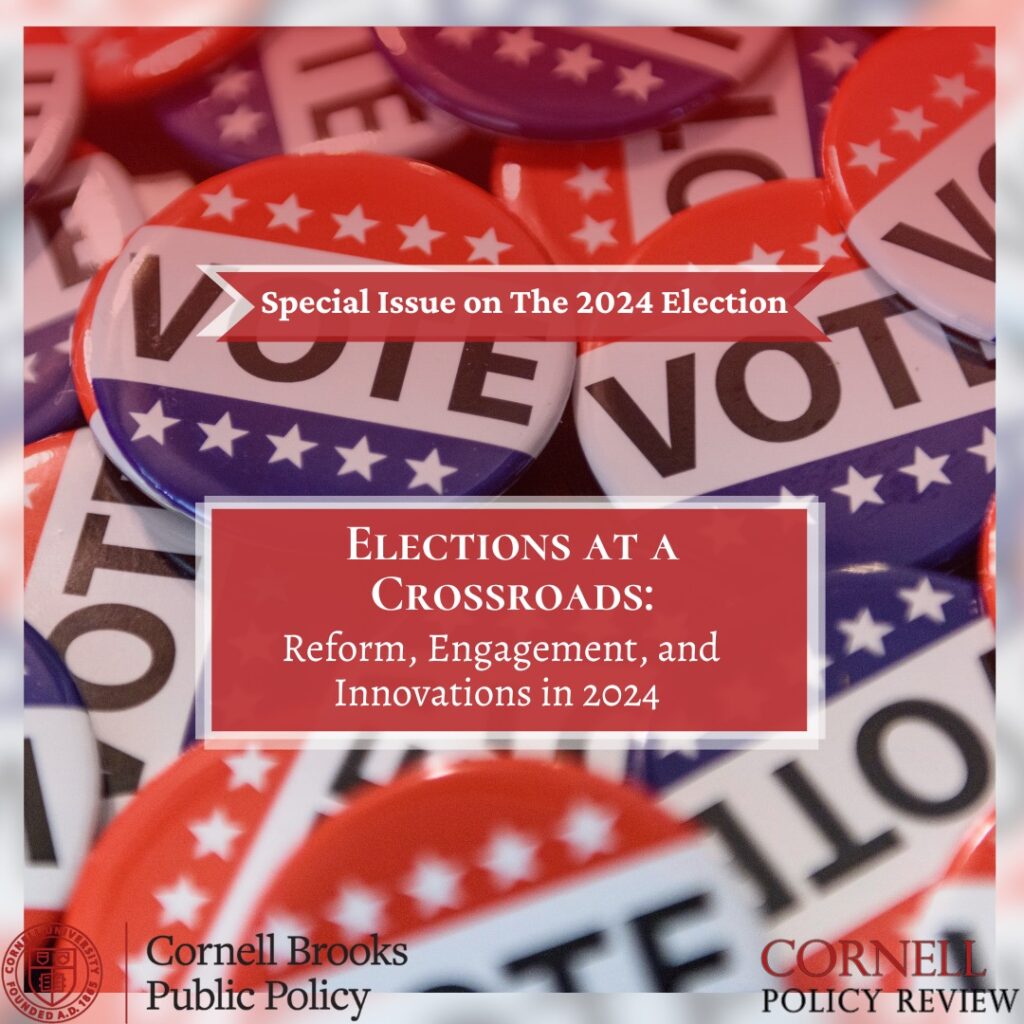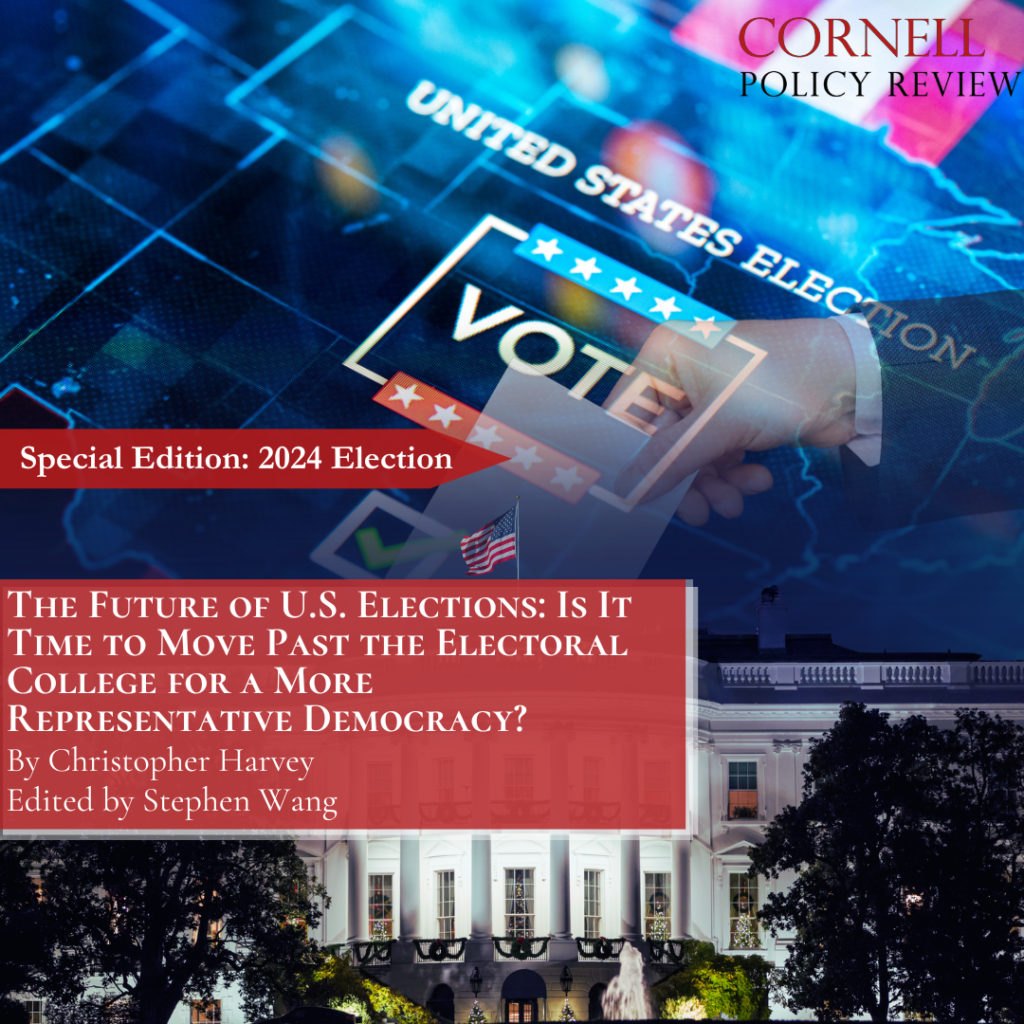By: Liam McCabe
Edited by: Ava LaGressa
Graphic by: Arsh Naseer
Rooftop snipers, body armor, seven foot tall wrought iron fencing, K-rail concrete barriers and aerial drone monitoring; this is not a war zone – its Maricopa County, Arizona, United States of America, 2024.
And what lies behind this military fortification? The Machines. The election machines.
Specifically, the vote tabulation machines for the Maricopa County Board of elections and the entire election apparatus which this year includes steel cages for ballots, sheriff deputies with magnetometers and election workers that have had to undergo active shooter drills and training that includes tourniquet application.1
All of this effort is geared toward addressing the possible violence that may erupt from a contested US Presidential election that will conclude in a matter of days. Underlying potential conflict lies deep distrust in the technology, people and processes that tabulate and certify our Presidential elections. Experts have suggested that some of that distrust in the vulnerability of current technology is warranted while many other officials have laid the blame on and have tried to counteract misinformation and fear mongering.2 The purpose of this article is to provide a review of the upsurge of cynicism and an analysis of vote tabulation technology, processes and potential issues that surround the 2024 US Presidential Election in seven key swing states.
The Rise of Voter Distrust
One key element of rising distrust in technology is the rapid advance in which our lives become so dependent upon it and how little we understand about how it functions at a basic level. Everything from how our paycheck is deposited to how we purchase food, consume news, and engage socially is done online through digital technology. Much like the other technology we depend on to live our lives, little is known by the average citizen on how election machines actually work and even with knowledge of the functionality, trust must exist to ensure confidence. Sadly, partisan politicians, biased media coverage and political operators have taken advantage of that ignorance to spread a general mistrust.3 Unfortunately now bad actors have in their arsenal the ability to magnify misinformation and exponentially influence the electorate with artificial intelligence (AI).4
 SOURCE: Charles Stewart III, using data from the 2022 Survey of the Performance of American Elections, MIT Election Data and Science Lab. 5
SOURCE: Charles Stewart III, using data from the 2022 Survey of the Performance of American Elections, MIT Election Data and Science Lab. 5
The protests surrounding the last presidential election grew out of an atmosphere of suspicion despite multiple audits and recounts that confirmed their accuracy.6 However, the fact remains that a tremendous amount of faith must be put in machines that use digital and cloud-based technology to count and record votes for our elections, and it is not only the least technologically informed who fear that technology but also the experts.7 According to cyber security specialists, the main threats that states face are indeed the digital vulnerabilities in older machines and their susceptibility to being hacked.8
The Machines
The 2024 election will feature a range of voting systems, including Dominion Voting Systems, ES&S (Election Systems & Software), and Hart InterCivic.9 While they have encountered challenges following the 2020 election, including legal disputes and disinformation, efforts are being made to address these issues and strengthen public trust in the electoral process. Especially important will be the focus in swing states like Arizona, Michigan, and Georgia, Nevada and Wisconsin.
-
-
Dominion Voting Systems offers optical scan voting machines with a paper trail, essential for conducting audits and recounts. Additionally, including Ballot Marking Devices (BMDs) has enhanced accessibility. Despite facing persistent disinformation campaigns, Dominion is committed to upholding its robust security features and integrity.10
-
ES&S is employed in Michigan, Pennsylvania, Wisconsin, and North Carolina. Like Dominion, ES&S provides optical scan voting machines and Ballot Marking Devices (BMDs). Nevertheless, concerns have been raised regarding ES&S’s Direct Recording Electronic (DRE) Machines due to the absence of a paper trail. Legal challenges have emerged, particularly surrounding absentee ballot verification in Michigan and Pennsylvania and inconsistencies in Wisconsin’s counties.11
-
Hart InterCivic, a smaller vendor, is used in Pennsylvania and North Carolina. Its Verity Voting System combines optical scan machines and BMDs, emphasizing a Voter-Verified Paper Audit Trail (VVPAT) for auditing purposes. While Hart InterCivic has faced a different level of scrutiny than Dominion or ES&S, questions have been raised about consistency across counties in the states utilizing its systems.12
-
Despite their differences, all these systems rely on their paper trail capabilities, which are crucial for conducting Risk-Limiting Audits (RLAs). RLAs are increasingly utilized in swing states like Georgia, Michigan, and Wisconsin to ensure that machine-recorded votes align with paper ballots13. However, efforts to combat disinformation and address legal challenges continue to be undertaken to bolster public trust in the electoral process. The widespread implementation of RLAs in many swing states has significantly enhanced election accuracy. Nonetheless, restoring public confidence remains a significant focus as efforts are made to counter misinformation and dispel prior controversies surrounding voting technology.14
Swing States Analysis
The voting technology used in swing states is crucial in determining how votes are counted and certified. Below is an analysis of the current systems and the legal challenges impacting public confidence. Understanding the technology in combination with new Federal guidelines, including those from the Help America Vote Act (HAVA), the National Institute of Standards and Technology (NIST), and the Department of Homeland Security (DHS), will help play a significant role in regulating and monitoring this upcoming election.15 These organizations provide the framework for federal funding and security standards, but how these guidelines are implemented varies by state.
-
-
-
Arizona: Arizona uses Dominion Voting Systems. A lawsuit challenges the 2023 Election Procedures Manual, particularly questioning the Secretary of State’s authority in certifying votes during close elections.16
-
Michigan: Michigan employs ES&S and Dominion Voting Systems, providing paper ballot backups. Legal challenges have arisen around absentee ballot verification and human error during the 2020 election, particularly in Wayne County.17
-
Georgia: Georgia relies on Dominion Voting Systems and has implemented Risk-Limiting Audits (RLAs) that produce a paper record since 2020. This change was in response to a Federal Court Ruling from 2020.18 Despite reforms, Dominion’s role in previous elections continues to generate skepticism and some experts have raised concerns about the vulnerability of the current technology.19
-
Pennsylvania: Pennsylvania uses ES&S, Dominion, and Hart InterCivic machines. Litigation focuses on mail-in ballot discrepancies, including improperly dated envelopes and county voting system inconsistencies.20
-
Nevada: Nevada uses Dominion Voting Systems and conducts audits using paper trails. However, disinformation about the integrity of these systems persists.21
-
Wisconsin: Wisconsin employs ES&S and Dominion Voting Systems with paper backups. However, the state’s decentralized election management across counties has led to concerns over consistent security practices and legal fights over drop boxes have already been launched.22
-
North Carolina: North Carolina uses a combination of ES&S and Hart InterCivic voting machines. Occasional technical malfunctions have been reported, but they have not affected election outcomes. Legal challenges remain limited.23
-
-
What to Expect
Too close to call – News outlets across the country have had to develop their policies for when and if they will call a win for either candidate on election night considering the anticipated closeness of the election and past premature declarations of victory that turned out to be false.24 With November 5th only days away, polling in the swing states show a statistical tie.25 If these trends continue, it is plausible we will not know the winner of the election until days or weeks later because many of these states are already embroiled in the more than 165 lawsuits currently being litigated in respect to their election policies and procedures.26 Overshadowing this technical and legal uncertainty are the reports that voter confidence in the integrity of the election process is also at an all-time low. This volatile mixture of distrust, legal limbo and battling narratives may lead to the kind of chaos witnessed four years ago.
Where do We Go from Here
The 2024 Presidential Election will be more closely monitored than any US election in history for any inconsistencies and while the fear and controversy over the technology and process of the election is unprecedented, it has led to updated voting machine security features and opportunities for increased citizen participation as poll watchers.27 This election will also be a learning opportunity as experts and policymakers monitor the election’s political implications and the role of technology in ensuring a fair and transparent voting process.28
While voting machines of the future may incorporate innovations like blockchain technology for secure digital records or mobile app connectivity for absentee voting, these systems will undoubtedly require ongoing security upgrades to keep pace with evolving threats. Yet, policy and technology experts from across the political divide have currently reached one unmitigated conclusion: regardless of the complexity of machines or systems we build, the most vital safeguard remains humanity’s oldest tool for trust… the humble power of the paper. In an era of digital dominion, perhaps the greatest act of defiance—the true rage against the machine—is cutting a path along a paper trail. 29
Works Cited
-
Knutson, Ryan. n.d. “Stop the Steal 2.0.” The Journal. https://www.wsj.com/podcasts/the-journal/stop-the-steal-20/507bb036-24d4-4e9e-a107-10d25d46c328.
-
Zdun, Matt . 2022. “Machine Politics: How America Casts and Counts Its Votes.” Reuters, August 23. https://www.reuters.com/graphics/USA-ELECTION/VOTING/mypmnewdlvr/.
-
Lapinski, John, and Stephen Pettigrew. 2024. “How Votes Get Counted and Reported on Election Night – and How NBC News Gathers and Checks the Data.” NBCNews.Com. NBCUniversal News Group. October 18. https://www.nbcnews.com/politics/2024-election/votes-get-counted-reported-election-night-nbc-news-gathers-checks-data-rcna174579.
-
Kreps, Sarah. 2023. “How AI Threatens Democracy.” Journal of Democracy 34, no. 4. October. https://www.journalofdemocracy.org/articles/how-ai-threatens-democracy/.
-
Stewart III, Charles. 2024. “How We Voted in 2022: A Topical Look at the Survey of the Performance of American Elections.” MIT Election Data + Science Lab. MIT. https://electionlab.mit.edu/sites/default/files/2023-05/HowWeVotedIn2022.pdf.
-
Boyce, Lily, Lazaro Gamio, Eli Murray, and Alicia Parlapiano. 2024. “Tracking the Swing States for Harris and Trump.” The New York Times. The New York Times. August 14. https://www.nytimes.com/interactive/2024/us/elections/presidential-election-swing-states.html.
-
Tilman, Joseph, Raeedah Wahid, Benjamin Bain, and Alex Newman. 2024. “More Than 165 Lawsuits Shape the 2024 US Presidential Election.” Bloomberg Law. October 15. https://news.bloomberglaw.com/litigation/more-than-165-lawsuits-shape-the-2024-us-presidential-election.
-
Patterson, Thomas E. 2020. “A Tale of Two Elections: CBS and Fox News’ Portrayal of the 2020 Presidential Campaign.” The Harvard Kennedy School Shorenstein Center, December 17. https://shorensteincenter.org/patterson-2020-election-coverage/.
-
Hasen, Richard L. 2023. “Identifying and Minimizing the Risk of Election Subversion and Stolen Elections in the Contemporary United States.” Harvard Law Review. March 24. https://harvardlawreview.org/forum/no-volume/identifying-and-minimizing-the-risk-of-election-subversion-and-stolen-elections-in-the-contemporary-united-states/.
-
“Elections 101: About Dominion Voting Systems.” 2024. Dominion Voting Systems. Accessed October 28. https://www.dominionvoting.com/elections-101-about-dominion-voting-systems/.
-
Walker, Carter . 2024. “Everything You Need to Know about Pa.’s Voting Machines, How the State Keeps Them Safe and More.” News. WHYY . PBS NPR. February 27. https://whyy.org/articles/pennsylvania-voting-machines-elections-101-prebunking/.
-
Mestel, Spenser . 2024. “How Open Source Voting Machines Could Boost Trust in US Elections.” Tech Review. MIT Technology Review. MIT. Accessed October 28. https://www.technologyreview.com/2024/03/07/1089524/open-source-voting-machines-us-elections/.
-
Miller, Maggie. 2024. “The Nation’s Best Hackers Found Vulnerabilities in Voting Machines — but No Time to Fix Them – Flopping Aces.” News Politico. August 12. https://floppingaces.net/most-wanted/the-nations-best-hackers-found-vulnerabilities-in-voting-machines-but-no-time-to-fix-them/.
-
Norden, Lawrence, and Derek Tisler. 2023. “Securing the 2024 Election | Brennan Center for Justice.” Brennan Center for Justice. April 27. https://www.brennancenter.org/experts/lawrence-norden.
-
U.S. Election Assistance Commission. 2024. “Certified Voting Systems” January 9. https://www.eac.gov/voting-equipment/certified-voting-systems.
-
Stewart III, Charles, and R. Michael Alvarez. 2018. “Election Auditing;Key Issues and Perspectives.” In Caltech/MIT Voting Technology Project. Massachusetts Institute of Technology in Cambridge, Massachusetts.: MIT Election Data & Science Lab. https://electionlab.mit.edu/sites/default/files/2019-06/Election-Auditing-Key-Issues-Perspectives.pdf.
-
Jackson, Dean , and Jon Bateman. 2024. “Counterin Disinformation Effectively: An Evidence-Based Policy Guide.” Research. Carnegie Endowment for International Peace. CarnegieEndowment.org.
-
LII / Legal Information Institute. 2024. “52 U.S. Code Chapter 209 – Election Administration Improvement.” https://www.law.cornell.edu/uscode/text/52/subtitle-II/chapter-209.
-
Greenberg, Madeleine. 2024. “RNC and Arizona Republicans File Lawsuit Challenging State Election Manual.” News. Democracy Docket. February 9. https://www.democracydocket.com/news-alerts/rnc-and-arizona-republicans-file-lawsuit-challenging-state-election-manual/.
-
Jocelyn Benson, Secretary of State. 2021. “Audits of the November 3, 2020 General Election.” Audit. Lansing, Michigan: State of Michigan Department of State. https://www.michigan.gov/-/media/Project/Websites/sos/30lawens/BOE_2020_Post_Election_Audit_Report_04_21_21.pdf?rev=8267d812942643fabb3dc2ccf70c2fdd.
-
Curling et al v. Raffensperger et al. 2020. THE UNITED STATES DISTRICT COURT FOR THE NORTHERN DISTRICT OF GEORGIA ATLANTA DIVISION.
-
O’Brien, Miles, dir. 2024. “Inside Georgia’s Effort to Secure Voting Machines as Experts Raise Concerns.” PBS News Hour. PBS. https://www.pbs.org/newshour/show/inside-georgias-effort-to-secure-voting-machines-as-experts-raise-concerns.
-
Hall, Peter. 2024. “Commonwealth Court Says Rejecting Mail-in Ballots without a Date Violates the PA Constitution Pennsylvania Capital-Star.” Pennsylvania Capital-Star. August 30. https://penncapital-star.com/campaigns-elections/commonwealth-court-rules-rejecting-mail-in-ballots-without-a-date-violates-the-pa-constitution/.
-
Guerra, Maite. 2024. “Elections in Nevada: Safe, Secure, and under Attack by False Narratives • Nevada Current.” Nevada Current. October 21. https://nevadacurrent.com/2024/10/21/elections-in-nevada-safe-secure-and-under-attack-by-false-narratives/.
-
Bosman, Julie. 2024. “The Fight Over Ballots Has Already Begun in Wisconsin.” The New York Times, October 19, sec. U.S. https://www.nytimes.com/2024/10/19/us/wisconsin-ballot-drop-boxes.html.
-
Herb, Sara Murray, Jeremy. 2024. “Election Workers Prepare to Handle ‘Concerning List’ of Poll Watchers Who Could Disrupt the Vote | CNN Politics.” CNN. October 25. https://www.cnn.com/2024/10/25/politics/poll-watchers-concerns/index.html.
-
“10 Facts About Election Security in North Carolina | NCSBE.” 2024. Accessed October 27. https://www.ncsbe.gov/about-elections/election-security/10-facts-about-election-security-north-carolina.
-
Miller, Lauren, and Wilder Will. 2024. “Certification and Non-Discretion: A Guide to Protecting the 2024 Election.” Stanford Law School. Stanford University. February 12. https://law.stanford.edu/publications/certification-and-non-discretion-a-guide-to-protecting-the-2024-election/.
-
Orey, Rachel, and Matthew Weil. 2021. “Improving the Voting Experience After 2020.” Bipartisan Policy Center. https://bipartisanpolicy.org/report/voting-experience-2020/


